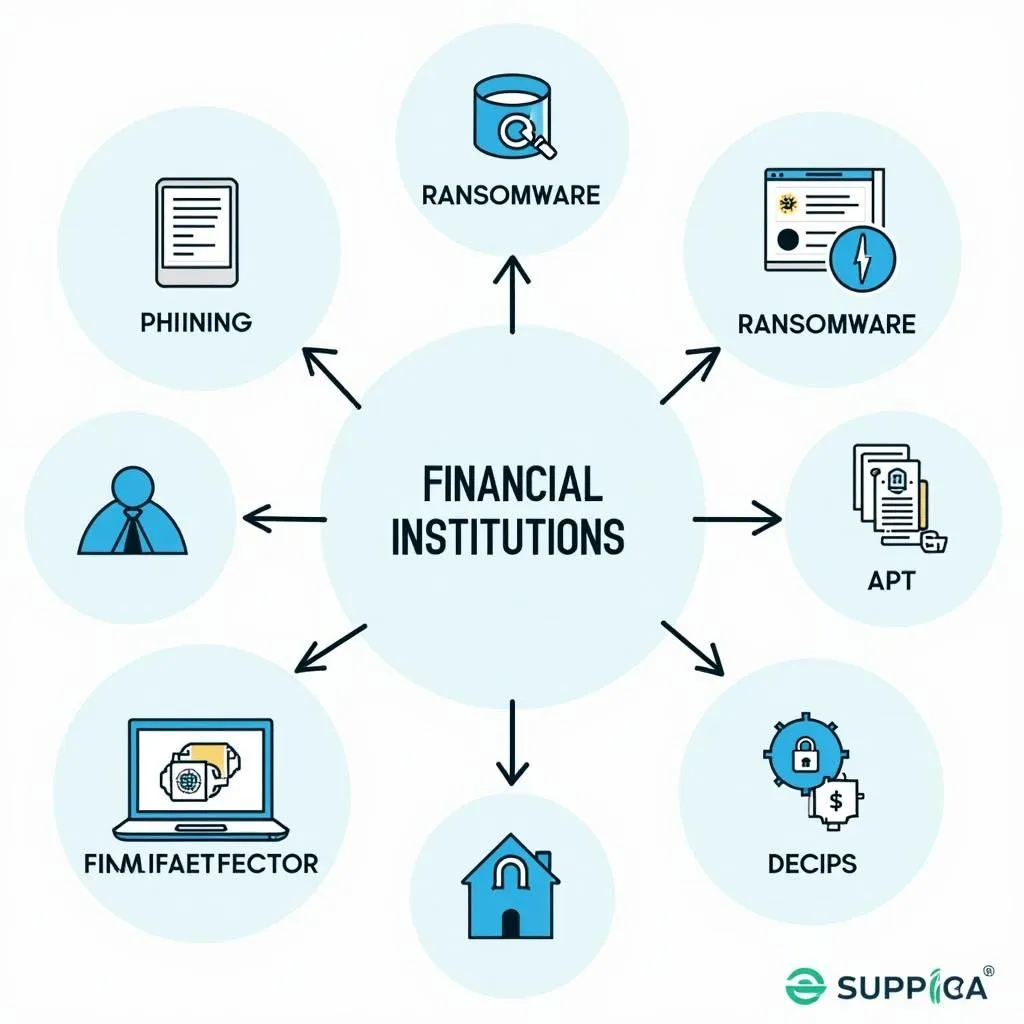In the PTE Academic exam, Summarize Written Text is a crucial part of the Speaking & Writing section. This task evaluates your ability to understand and condense content from given texts into a succinct but comprehensive one-sentence summary. In the financial services sector, cybersecurity threats are an increasingly relevant topic. Below, you’ll find practice questions related to cybersecurity risks in financial services that you can use to prepare for the PTE exam, as well as example answers and analysis.
Summarize Written Text Practice 1: Cybersecurity Risks in Financial Institutions
Text:
In today’s world, financial institutions are prominent targets for cyber attackers due to the vast wealth of sensitive financial information they process and store. The biggest cybersecurity threats these organizations face include phishing, ransomware, and advanced persistent threats (APT). Phishing attacks, wherein attackers impersonate trusted entities, are increasingly common, seeking to steal confidential information such as login credentials. Ransomware attacks encrypt a victim’s data, rendering it inaccessible until a ransom is paid. APTs involve longer-term infiltration of systems, allowing attackers to continually extract valuable data undetected. Financial services firms must implement robust security measures, such as multi-factor authentication (MFA) and regular system audits, to combat the growing threat landscape.
Instructions: Summarize the text in one sentence. Your response must be between 5 and 75 words.
 Financial institutions face increasing cybersecurity risks from phishing, ransomware, and APTs, requiring advanced security measures.
Financial institutions face increasing cybersecurity risks from phishing, ransomware, and APTs, requiring advanced security measures.
Answer for Practice 1 – Band 90 (Highest Score):
Financial institutions face numerous cybersecurity threats, including phishing, ransomware, and APTs, which can lead to significant data breaches, and they must adopt security measures such as MFA and regular system audits to mitigate these risks.
Explanation:
- Content: Comprehensive, covering all major threats and countermeasures while maintaining conciseness.
- Form: Adheres to word limit (33 words).
- Grammar: Free from errors, uses complex sentence structures effectively.
- Vocabulary: Uses precise and sophisticated terms (e.g., “robust security measures,” “APT”).
- Spelling: No issues detected.
Answer for Practice 1 – Band 75 (Good Score):
Financial institutions face phishing, ransomware, and APT threats, and they need security steps such as multi-factor authentication and audits to protect against cyberattacks.
Explanation:
- Content: Good coverage of main points, though less comprehensive than the band 90 version.
- Form: Word count is appropriate (23 words).
- Grammar: Mostly correct, but simpler sentence structure.
- Vocabulary: Utilizes adequate vocabulary, though not as sophisticated as the top band.
- Spelling: No issues.
Answer for Practice 1 – Band 65 (Average Score):
Financial institutions face phishing and ransomware which harm data, and they need to protect through security actions.
Explanation:
- Content: Misses details such as APTs and specific security measures.
- Form: Adheres to word limits (18 words).
- Grammar: Basic sentence structure, minor awkwardness (“protect through security actions”).
- Vocabulary: Limited vocabulary, lacks depth (e.g., using “security actions” instead of “measures”).
- Spelling: No issues.
Summarize Written Text Practice 2: Digital Banking and Cybersecurity
Text:
Digital banking offers convenience but also exposes users to a range of cybersecurity threats. Hackers constantly attempt to exploit vulnerabilities in online banking systems, targeting both individuals and financial institutions. Account takeovers, identity theft, and malware infections are common tactics used to siphon funds and personal data. Financial organizations must stay ahead of these threats by enhancing encryption protocols, educating customers about potential risks, and applying firewalls and intrusion detection systems to monitor network activity. As a result, cybersecurity in digital banking has become an integral element of the industry’s operational security strategy.
Instructions: Summarize the text in one sentence. Your response must be between 5 and 75 words.
 Digital banking faces various cyber risks, making enhanced encryption and network monitoring essential.
Digital banking faces various cyber risks, making enhanced encryption and network monitoring essential.
Answer for Practice 2 – Band 90 (Highest Score):
Digital banking provides convenience but introduces cybersecurity risks such as account takeovers and malware, so institutions must enhance encryption, monitor networks with advanced tools, and educate users on protective measures.
Explanation:
- Content: Covers all key threats and necessary preventative measures clearly.
- Form: Word count is within limit (40 words).
- Grammar: Complex sentence structure, proper use of conjunctions and punctuation.
- Vocabulary: Use of high-level terms (e.g., “enhance encryption,” “protective measures,” “malware”).
- Spelling: No issues.
Answer for Practice 2 – Band 75 (Good Score):
While digital banking offers convenience, it also presents cybersecurity risks like malware and account takeovers, which financial institutions address by using encryption and monitoring systems.
Explanation:
- Content: Solid but slightly simplified.
- Form: Word limit maintained (27 words).
- Grammar: Sentence is grammatically correct but lacks additional details.
- Vocabulary: Appropriate, but not as advanced.
- Spelling: No issues.
Answer for Practice 2 – Band 65 (Average Score):
Digital banking faces risks like malware and theft, so banks need to protect their systems well.
Explanation:
- Content: Significantly simplified, missing details on protective measures and user education.
- Form: Word count is acceptable (13 words).
- Grammar: Basic sentence structure, lacks cohesion.
- Vocabulary: Repetitive and vague (“protect their systems well”).
- Spelling: No issues.
Vocabulary and Grammar
Here are 10 advanced vocabulary words found in the practice texts, with their phonetic transcriptions, meanings, and example sentences:
-
Encryption /ɪnˈkrɪpʃən/: The process of converting information or data into a code to prevent unauthorized access.
Example: The bank uses encryption to secure all online transactions. -
Phishing /ˈfɪʃɪŋ/: A technique used by attackers to trick people into giving sensitive information by pretending to be trustworthy entities.
Example: A phishing email posed as a message from my bank. -
Ransomware /ˈrænsəmˌwɛr/: Malware that blocks access to a system until a ransom is paid.
Example: The company lost access to its files due to a ransomware attack. -
Intrusion Detection System (IDS) /ɪnˈtruːʒən dɪˈtɛkʃən sɪstəm/: A system that monitors network or system activities for malicious purposes.
Example: An intrusion detection system identified the unauthorized access attempt. -
Account Takeover /əˈkaʊnt ˈteɪkˌoʊvər/: When a cybercriminal gains control of a user’s account to execute fraudulent activities.
Example: His bank account suffered an account takeover and was quickly drained. -
Multi-Factor Authentication (MFA) /ˈmʌlti ˈfæktər ɔːˌθɛntɪˈkeɪʃən/: An extra layer of protection used to ensure the security of an online account.
Example: Our system requires multi-factor authentication for extra security. -
APT (Advanced Persistent Threat) /ædˈvænst pərˈsɪstənt θrɛt/: A prolonged and targeted cyberattack in which an intruder gains access to a network and remains undetected.
Example: The organization was compromised by an APT, and it took months to detect the breach. -
Firewall /ˈfaɪərˌwɔːl/: A security system that controls incoming and outgoing network traffic based on predetermined rules.
Example: The firewall blocked the suspicious IP address. -
Malware /ˈmælˌwɛr/: Software that is designed to disrupt, damage, or gain unauthorized access to a computer system.
Example: The malware infected all of the company’s databases. -
Threat Landscape /θrɛt ˈlændˌskeɪp/: The totality of potential threats impacting a particular industry or organization.
Example: The cybersecurity threat landscape is constantly evolving.
Conclusion
Summarizing written texts on Cybersecurity Threats In Financial Services is not only a highly relevant exercise for the PTE exam but also an essential skill in understanding how these institutions face complex cyber threats. Regular practice with such topics helps you improve your response quality and better grasp the PTE test format. To explore more about cybersecurity in this domain, you could check resources such as Cybersecurity in digital banking and Digital banking and cybersecurity measures. Keep practicing, and refine your summarization skills for success in your PTE exam!